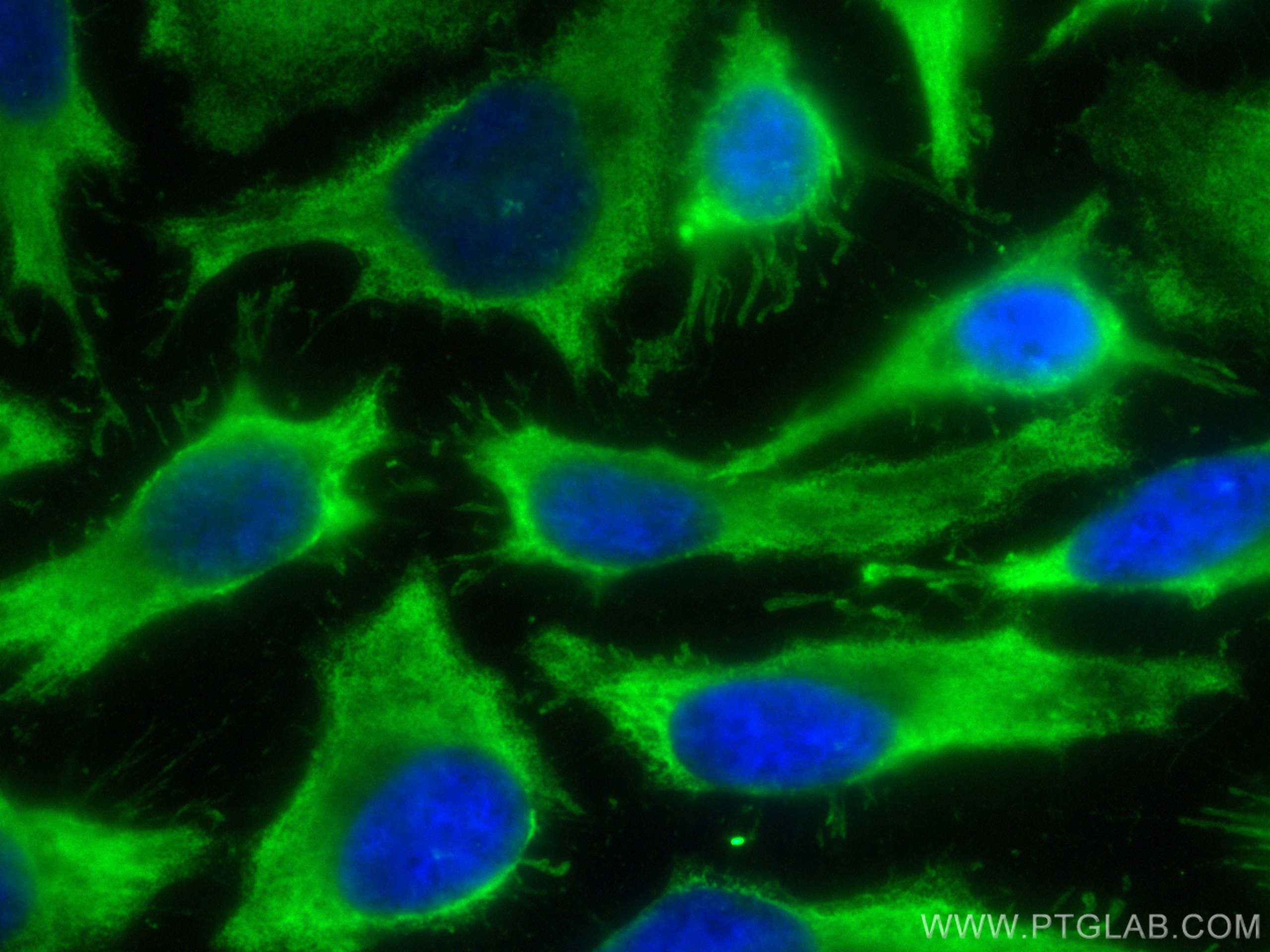CoraLite® Plus 488-conjugated SH3GLB2 Monoclonal antibody
SH3GLB2 Monoclonal Antibody for IF
Host / Isotype
Mouse / IgG1
Reactivity
Human, mouse, rat, pig, rabbit
Applications
IF
Conjugate
CoraLite® Plus 488 Fluorescent Dye
CloneNo.
4B1A10
Cat no : CL488-68325
Synonyms
Validation Data Gallery
Tested Applications
| Positive IF detected in | HeLa cells |
Recommended dilution
| Application | Dilution |
|---|---|
| Immunofluorescence (IF) | IF : 1:50-1:500 |
| It is recommended that this reagent should be titrated in each testing system to obtain optimal results. | |
| Sample-dependent, Check data in validation data gallery. | |
Product Information
CL488-68325 targets SH3GLB2 in IF applications and shows reactivity with Human, mouse, rat, pig, rabbit samples.
| Tested Reactivity | Human, mouse, rat, pig, rabbit |
| Host / Isotype | Mouse / IgG1 |
| Class | Monoclonal |
| Type | Antibody |
| Immunogen | SH3GLB2 fusion protein Ag8932 |
| Full Name | SH3-domain GRB2-like endophilin B2 |
| Calculated Molecular Weight | 395 aa, 44 kDa |
| Observed Molecular Weight | 47-50 kDa |
| GenBank Accession Number | BC014635 |
| Gene Symbol | SH3GLB2 |
| Gene ID (NCBI) | 56904 |
| Conjugate | CoraLite® Plus 488 Fluorescent Dye |
| Excitation/Emission Maxima Wavelengths | 493 nm / 522 nm |
| Form | Liquid |
| Purification Method | Protein G purification |
| Storage Buffer | PBS with 50% Glycerol, 0.05% Proclin300, 0.5% BSA, pH 7.3. |
| Storage Conditions | Store at -20°C. Avoid exposure to light. Stable for one year after shipment. Aliquoting is unnecessary for -20oC storage. 20ul sizes contain 0.1% BSA. |
Background Information
SH3GLB2 is an endophilin-related protein family with 395-amino acid protein and contains an N-terminal domain, a central coiled-coil region, and a C-terminal SH3 domain. SH3GLB2 is expressed in many tissues, including skeletal muscle, adipocytes, brain, lung, colon, and mammary gland. SH3GLB2 was expressed in the cytoplasm of transfected HeLa cells and was excluded from nuclei(PMID: 11161816).
Protocols
| Product Specific Protocols | |
|---|---|
| IF protocol for CL Plus 488 SH3GLB2 antibody CL488-68325 | Download protocol |
| Standard Protocols | |
|---|---|
| Click here to view our Standard Protocols |


